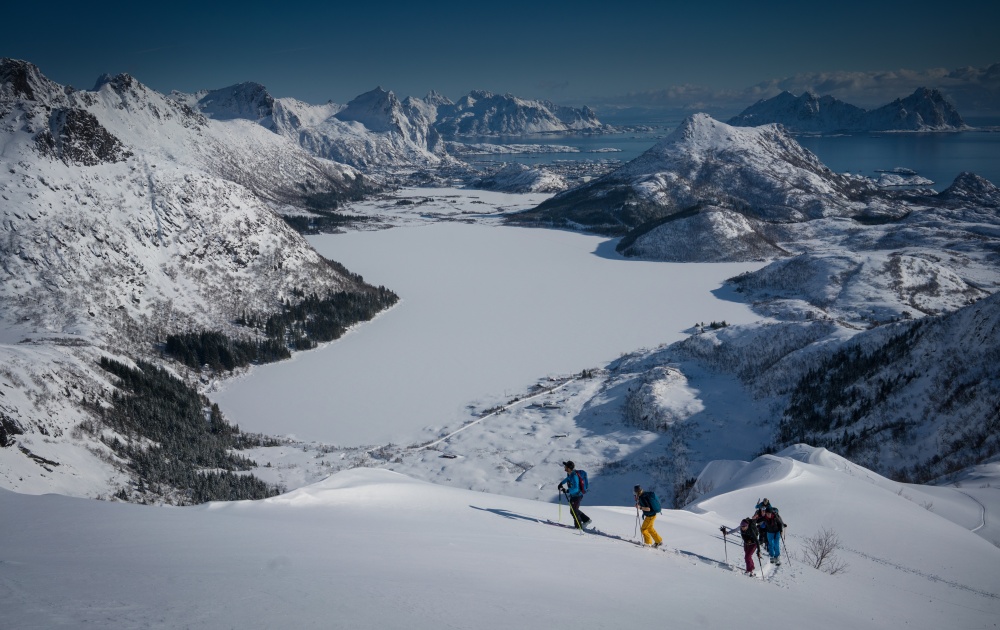
Lofoten - A Postcard or a Pilot?
Indeed, Lofoten is a picturesque postcard that you can easily send home to describe a mountain hike, climbing expedition, fishing trip, surfing session, kayaking adventure, or another unique experience close to both sky and sea.
But this beautiful postcard primarily portrays proud, independent, and innovative entrepreneurs who create significant value in both local and global markets.
In Lofoten, we have extensive employment in the private sector, with numerous small and medium-sized enterprises operating in seafood and tourism, in addition to agriculture, trade, and services. Our value creation is based on tradition, cultural heritage, and expansive exports. We are closely linked to international trends in European and global markets.
The fact that we have many small communities and export-oriented businesses also means that our greenhouse gas emissions are scattered across various point sources. We travel daily using emission-heavy vehicles in and out of the archipelago, whether by ferry, speedboat, cruise ships, airplanes, or helicopters.
Therefore, to reduce greenhouse gas emissions in Lofoten, we must engage complex value chains and foster widespread public engagement to adopt new solutions. Like everyone else, we require financial risk mitigation during this challenging and costly transition.
Therefore, to reduce greenhouse gas emissions in Lofoten, we must engage complex value chains and foster widespread public engagement to adopt new solutions. Like everyone else, we require financial risk mitigation during this challenging and costly transition.In Lofoten, we find that national instruments for green transition don't always meet the capabilities and needs of the districts adequately. Hence, "Lofoten, the Green Islands" also serves as a pilot to guide and influence the support system towards a better understanding of the district's value chains and market access.
How can we better equip mechanisms for green growth and transition in the districts?
The support mechanisms for green growth and transition are designed to provide risk mitigation and favor projects contributing to sustainable development. The allocation of support doesn't distinguish between central or peripheral geographic locations. Once the technology has been adopted sufficiently nationwide, the market is deemed mature, and the support scheme ends.
Is this premise correct, we ask?
The principle of "equal treatment" from the support system isn't necessarily the same as fair treatment. Why? Because those undergoing the green shift aren't the same; we are different. The concept of "One size fits all" doesn't hold. The best measures are those tailored to specific needs.
Financial support is currently given as if "everyone starts from the same starting line," even though many have never trained before. This approach exacerbates the growing disparities between central and peripheral areas, even in green transition. It probably isn't the intention, but it appears that national support schemes are structured like training programs for the already strong.
On the other hand, the strength of district municipalities lies in local knowledge and proximity to citizens, politicians, and decisions. Bureaucratic processes in smaller communities are often shorter, faster, and simpler than in larger cities. Ambitious districts can work efficiently and quickly create leeway for change. But many districts lack volume training and a tailored training program.
We believe that there must be dedicated support schemes relevant for inter-municipal and public-private collaborations in peripheral areas. Perhaps these support schemes should last longer than those in central areas, allowing for a slower pace of development.
We're more than willing to help develop a support system and a training program that will guide the entire Districts of Norway through the green transition.